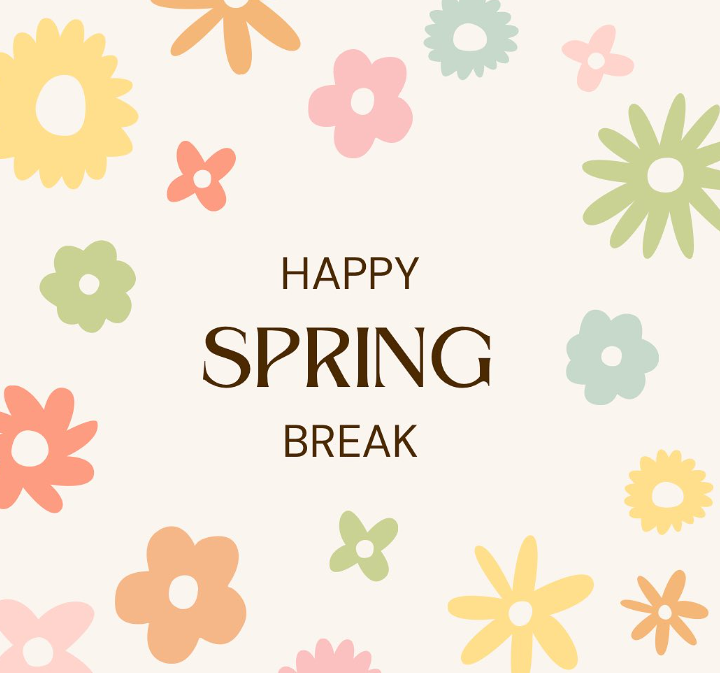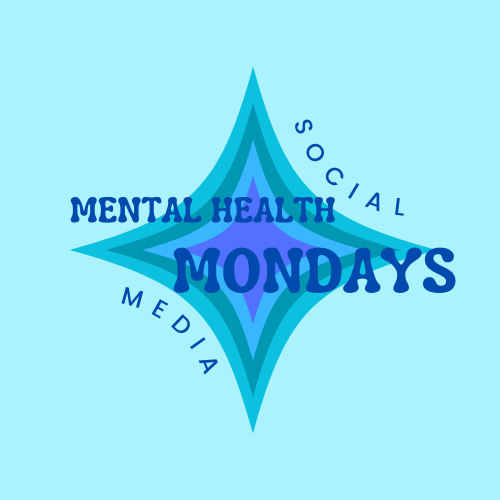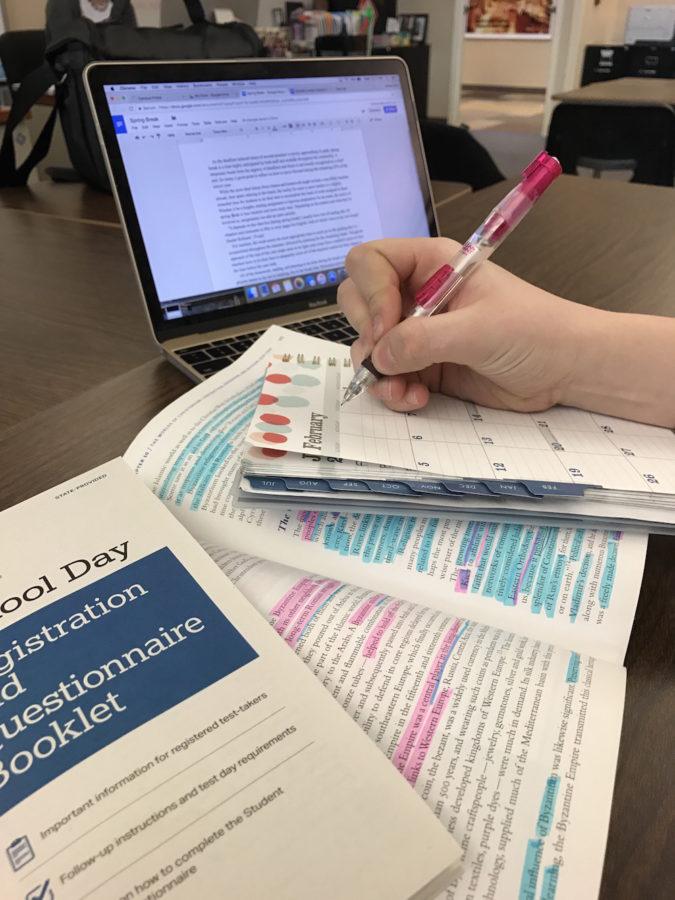Spring Break or Study Break?
media by Sophie Martinez
March 15, 2017
As the deadline-induced stress of second semester is slowly approaching its peak, spring break is a time highly anticipated by both staff and students throughout the community. A temporary break from the urgency of deadlines and finals is universally recognized as a relief and, for many, a good point to reflect on how to move forward during the remaining 25% of the school year.
While the most ideal hiatus from classes and homework might include a sun-filled vacation abroad, time spent relaxing at the beach, the reality for most is more similar to a slightly extended time for students to do their best to accomplish the loads of work assigned to them. Whether it be a lengthy reading assignment or rigorous preparation for an exam, the reality of spring break is less vacation and more study time. Depending on the student and what they’re involved in, assignments can add up quite quickly.
“It depends on the class but [during spring break] I usually have lots of reading like AP chapters and notecards or fifty to sixty pages for English, both of which I have to do over break,” Zander Robinett ‘19 said.
For teachers, the week seems the most appropriate time to catch up on the grading they’ve accumulated throughout the semester, followed by planning for the remaining weeks. Though the approach of the end of the year might seem to be light years away from a student’s point of view, teachers have to do their best to adequately cover all of the required content for their classes in the time before the year ends.
All of the homework, reading, and planning to be done during the break is important, but priority seems to lay not in studying, but in the break time. Relaxation and rejuvenation is required to finish out the year with a strong work ethic and determination.




![Black & Gold Yearbook Editor-in-Chief Chloe Farson ‘25 works on a winter trends and events page for the yearbook during period four in room 4113 March 25. The deadline for the final version of the yearbook is this Friday, March 29. “Although I’m quite nervous and stressed about [the deadline], I’m looking forward to seeing the finished product more than anything,” Farson said. “I’ve found our book to be extremely unique from ones in past years, and it’s been so beautiful to work on. It’s wonderful to see it truly begin to come together, even though we don’t necessarily have all the time in the world to make it perfect.”](https://rockmediaonline.org/wp-content/uploads/2024/03/IMG_8224-e1711942407745-1200x1046.jpg)


![The girls varsity soccer team walk back to their bench during halftime April 1. The Jags played against the Castle View Sabercats at the Douglas County Stadium and scored 3-0 W. “It felt really good [to beat Castle View]. I feel like that was a big win for us because knowing that we came together to beat a pretty good team has definitely given us some leverage for this season,” attacking midfielder Grace Rossner ‘24 said.](https://rockmediaonline.org/wp-content/uploads/2024/04/DSC_4906-1-1200x1057.jpg)














![At Prairie View High School, the winterguard team poses with their plaque after winning first place at their competition Feb. 24. This was the second time they won first place this year, this time with a score of 74.190 points. “I [love being] a witch, but my favorite [part of the show] is the trios, it’s so cool,” Heather Strickland ‘27 said.](https://rockmediaonline.org/wp-content/uploads/2024/03/PRARIE-VIEW-BY-MARGO-SANFORD-e1709531739910-1200x910.jpg)

















